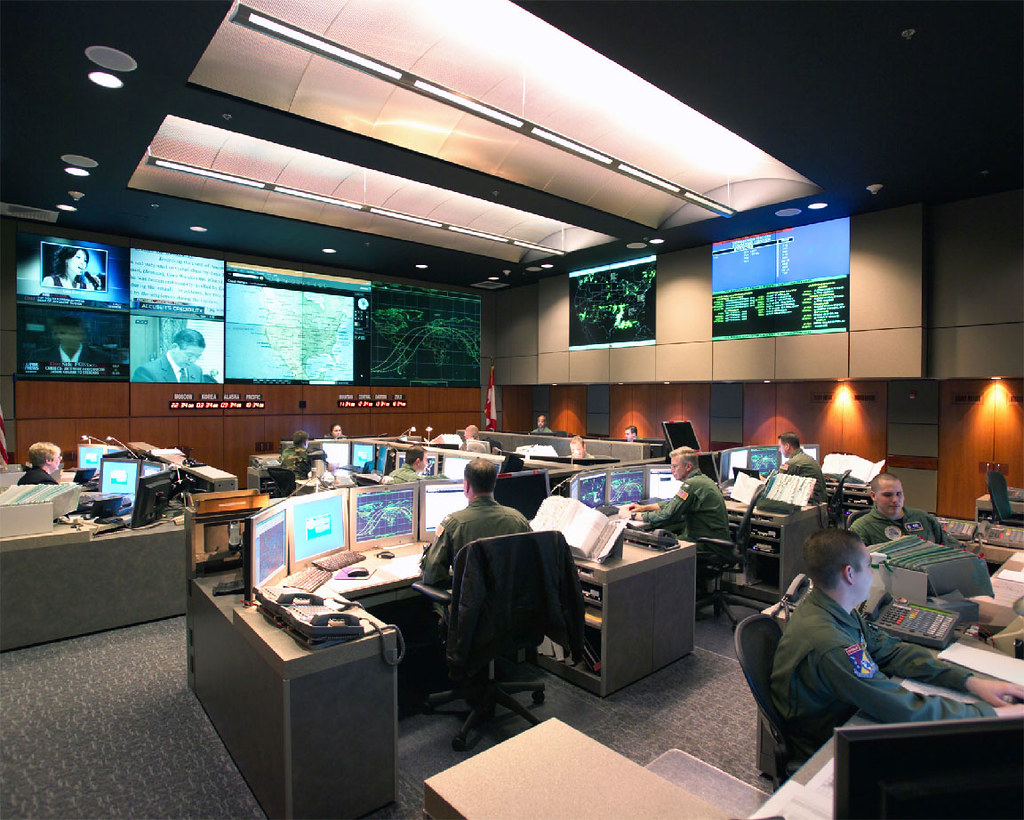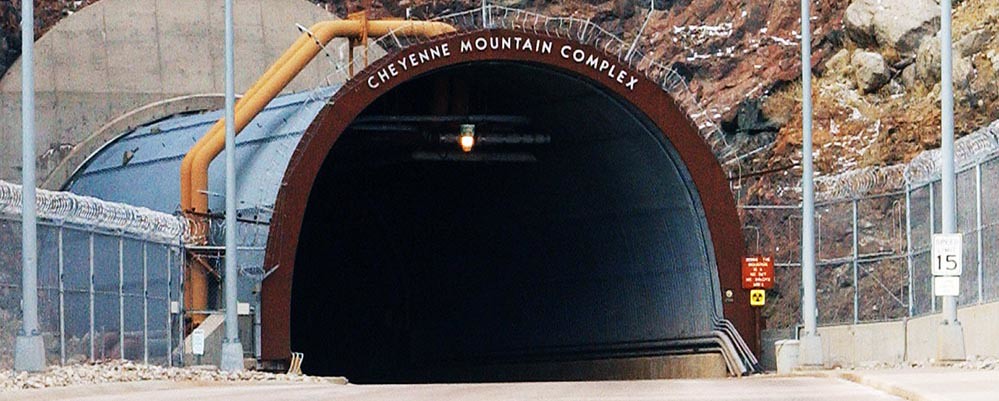NORAD: this is how the great bunker of Cheyenne Mountain was built and this is how it is inside
Without a doubt, the most famous of the military bunkers prepared for a nuclear war is that of the North American Aerospace Defense Command (NORAD).
A military complex capable of surviving a 30-megaton explosion
Its underground facilities are located under Cheyenne Mountain, in Colorado (United States), a granite mountain 610 meters high, which provides the military complex with special protection thanks to which it would be capable of withstanding the explosion of a 30-megaton nuclear bomb (that is, 1,000 kilotons; to give us an idea, the bomb dropped on Hiroshima had 15 kilotons). Its construction began on May 18, 1961, so he will soon be 60 years old. NORAD became very famous thanks to the movie "WarGames" (1983), whose action took place largely in that bunker. Here the original trailer:
The NORAD bunker is just one of an extensive network of atomic shelters built during the Cold War to guarantee the continuity of the United States Government and the operation of its Armed Forces. In "Historical Dictionary of Cold War Counterintelligence" (2007), Nigel West pointed out that it is estimated that there are 96 nuclear bunkers in the District of Columbia alone, where Washington DC is located, although the most of them are much smaller than NORAD.

Construction of the huge Cheyenne Mountain bunker
The excavation of the Cheyenne Mountain complex lasted three years. Its cost is estimated at 66 million dollars at the time. Construction was carried out by civilian contractors under the supervision of the US Army Corps of Engineers. Although most of the work was already completed in August 1962, a geological fault forced the construction of a large concrete dome at one of the intersections, and the work was finally completed on May 1, 1964.

The habitable zone inside the complex is made up of 11 underground buildings built on giant springs to withstand the shock wave of a possible explosion and the effects of any earthquake.

These buildings occupy an area of 16,000 square meters. In total, eight of the buildings, in which the main chambers of the complex are located, have three floors each. There are three other two-story buildings that serve as the support area.

The complex has its own power station, where six large 956-kilowatt diesel generators were originally installed. It also has underground fuel tanks to feed the electrical station, and four large water tanks with a capacity of 5.67 million liters, which are fed by the natural spring located below the military complex. These water tanks are navigable, and are even used by US Navy personnel who work in the complex for re-enlistment ceremonies (in the absence of sea), as we see in this photo taken in 2009.

In this plan posted by Andrew Summerville of Stanford University, we see the layout of the complex. Access to NORAD is formed by a J-shaped tunnel with two entrances, one to the north and one to the south of Cheyenne Mountain. The part of the complex occupied by the NORAD cameras is shaped like a grid. In the southern corner of NORAD are the huge water reservoirs.
The most secure facility in the United States
The Cheyenne Mountain military complex is surely the most secure facility in the United States. In addition to its passive protection measures and the contingent of USAF sentinels that protect this facility, in case of any eventuality the US Army's 4th Infantry Division, based at Fort Carson (16 miles by road), is prepared to deploy rapidly to Cheyenne Mountain. At this photo we see a Stryker infantry fighting vehicle from that Division in an exercise carried out in the tunnel that leads to NORAD in 2016.

You will undoubtedly remember from the aforementioned film the huge atomic explosion-proof door that was closed when the complex was closed. Well, the reality is somewhat different, and that is that at the entrances to the complex there is not a single explosion-proof door, but two.

The interior of the main chamber of NORAD , in which personnel from the US and Canadian Armed Forces work, is also different from the one in the film: less spacious, as you can see, although the screen in the background on the right looks like the one from "WarGames": will they also play tic tac toe?

NORAD facilities also include the Missile Warning Center (MWC) of the Center for Space Surveillance Systems and Global Strategic Warning. Its mission, as its name indicates, is to give the alert in case of a nuclear attack with intercontinental ballistic missiles.

Life at NORAD: races, chapel, gym, commissary and even a tavern
In addition to hosting a major defense center, in 2018 the long tunnel of Cheyenne Mountain also hosted a run open to US and Canadian personnel from the facility, their families and friends to celebrate the 60th anniversary of NORAD. strong>

In the following video, posted by USAF Airman Magazine, we can see some more details about Cheyenne Mountain. For example, that it has its own fire department, a chapel, a hospital, a tavern (called the "Granite Inn"), a gym, and even a commissary where the personnel of the military complex can do their shopping daily.
---
Photo sources: US Air Force / Stanford University / James Vaughan.
|
Don't miss the news and content that interest you. Receive the free daily newsletter in your email: |
- Most read
- The 'hole' without civil flights around Paris during the opening of the Olympic Games
- Stunning footage of the F-15QA Ababil in flight recorded from its cockpit
- The firearms used by the Pontifical Swiss Guard, the smallest army in the world
- The most distant deployment of the Spanish Air Force in Australia and New Zealand
- Eurofighter vs F-35: the opinions of professional pilots on these advanced fighters
- The first photo of an F-16 fighter with Ukrainian insignia and the details it has revealed
- This is the driver station of an M1 Abrams tank and the impressive start of its engine

 ES
ES








Opina sobre esta entrada: